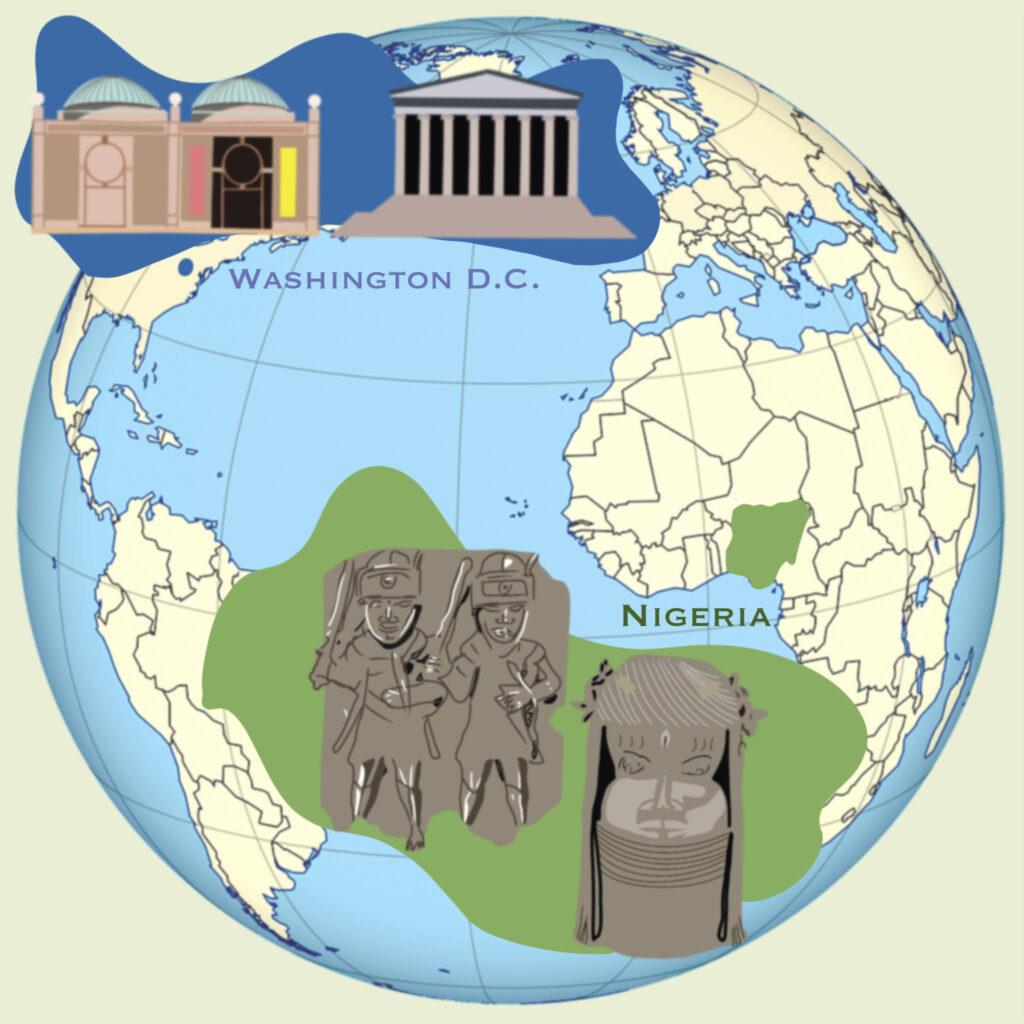Three of the United States’ most influential art museums, including Washington, D.C.’s Smithsonian National Museum of African Art and the National Gallery of Art, repatriated dozens of looted artifacts to Nigeria.
The 31 pieces the Smithsonian is returning are part of a group of thousands of sculptures that make up the “Benin Bronzes,” intricate metal plaques and sculptures which once resided in the royal palace of the Kingdom of Benin in Nigeria and served as emblems of the dynasty’s rich history and religious traditions. The transfer of ownership follows the creation of the Smithsonian’s ethical returns policy in April 2022, which authorizes Smithsonian museums to return collections that were stolen, taken under duress or otherwise unethically acquired to the appropriate community.
Ian Bourland, an associate professor of art history at Georgetown University, said the return of the bronzes is a victory for a long-standing movement of Western nations taking accountability for colonialist activity.
“After the Congress of Berlin, colonial powers moving into the African interior really intensified colonial exploitation of those countries,” Bourland told The Hoya. “A lot of pre-colonial African art was taken, and that has resided in global northern museums, for many cases, over 100 years or so. The debate around the provenance of that work, the ownership of that work, its conservation, its utility, its meaning has been ongoing.”
Initially stolen by British troops in a late 19th century raid on Benin City, Nigeria, many Western nations took possession of the artifacts and have since featured them in collections of African art at various museums including the British Museum in London and the Royal African Museum in Belgium.
Meredith McKittrick, an associate professor in Georgetown’s African studies program, said the transfer of ownership reflects a shift in the way people consider the effects of imperialism.
“I think it reflects an openness to reconsidering what we thought was the way things had to be,” McKittrick told The Hoya. “The idea that there’s been a change of mentality among some people in North America and in Europe is heartening, certainly.”
The Smithsonian National Museum of African Art commemorated the bronzes’ return to Nigeria at a press conference in the museum, where representatives from the museum and the National Gallery of Art officially transferred ownership of the bronzes to Nigeria’s National Commission for Museums and Monuments in the presence of members of the Kingdom of Benin royal family and Nigerian cultural officials.
Georgetown art and museum studies professor Lisa Strong said the process of returning stolen artifacts is widely established and straightforward.
“There’s a period where you take an inventory, you make public what you have, you allow groups who would make a claim on objects to come and see them, and then they petition and you approve it, and then you return objects,” Strong told The Hoya. “It becomes a very kind of clear, rational process, and I think that that has been helpful in getting museums to feel more comfortable.”
Returning stolen artifacts like the bronzes is a relatively easy, non-resource intensive way to address the effects of colonialism, according to McKittrick.
“It does reflect a change of thinking and mentality, which is important, but it doesn’t require a great deal of sacrifice by people in the global north to make it right in the way that economic reparations for colonialism would require,” McKittrick said.

Strong said despite losing part of their collections, museums benefit from returning stolen artifacts because it builds trust with patrons.
“If they are holding things that they shouldn’t have, then they can’t earn the trust of the public,” Strong said. “So it’s much more important for museums to do the right thing, even if it means that they don’t have those masterpieces of Benin art anymore.”
Several other Benin bronzes will still be on loan at the National Museum of African Art, but Bourland said people who want to see the bronzes should visit Nigeria to see the pieces in their original context.
“That kind of tourism usually benefits the economies and communities in these home countries,” Bourland said. “It’s very important that these works are reported because there’s an economic aspect of this as well.”
While the return of the bronzes is a step in the right direction, McKittrick said the movement to repatriate stolen artifacts is far from over.
“It’s great that this is finally happening — it’s definitely overdue,” McKittrick said. “I’ll feel like we’ve gotten somewhere when, for example, the British Museum hands back the Rosetta Stone. To me that is the sign — that’s the symbol.”





















